Rising Storm 2: Vietnam Review
Welcome to the Jungle, we got Napalm and PTSD
Rising Storm 2: Vietnam is a vivid depiction of the ill-fated conflict between the United States and the Vietnamese Rebels and North Vietnamese that took place in the 1960s and early 1970s. Following in the template of the original Rising Storm, the sequel was developed by Antimatter Games in collaboration with publisher Tripwire Interactive, and is another challenging, pseudo-realistic asymmetrical take on a historical conflict that seeks to find a balance between authenticity and fun shooter gameplay. While it does suffer from the same steep learning curve, a slight deficiency of content and a lack of polish, it still stands as a unique and very compelling multiplayer shooter that lives up to the high bar set by previous games in the Red Orchestra and Rising Storm series.
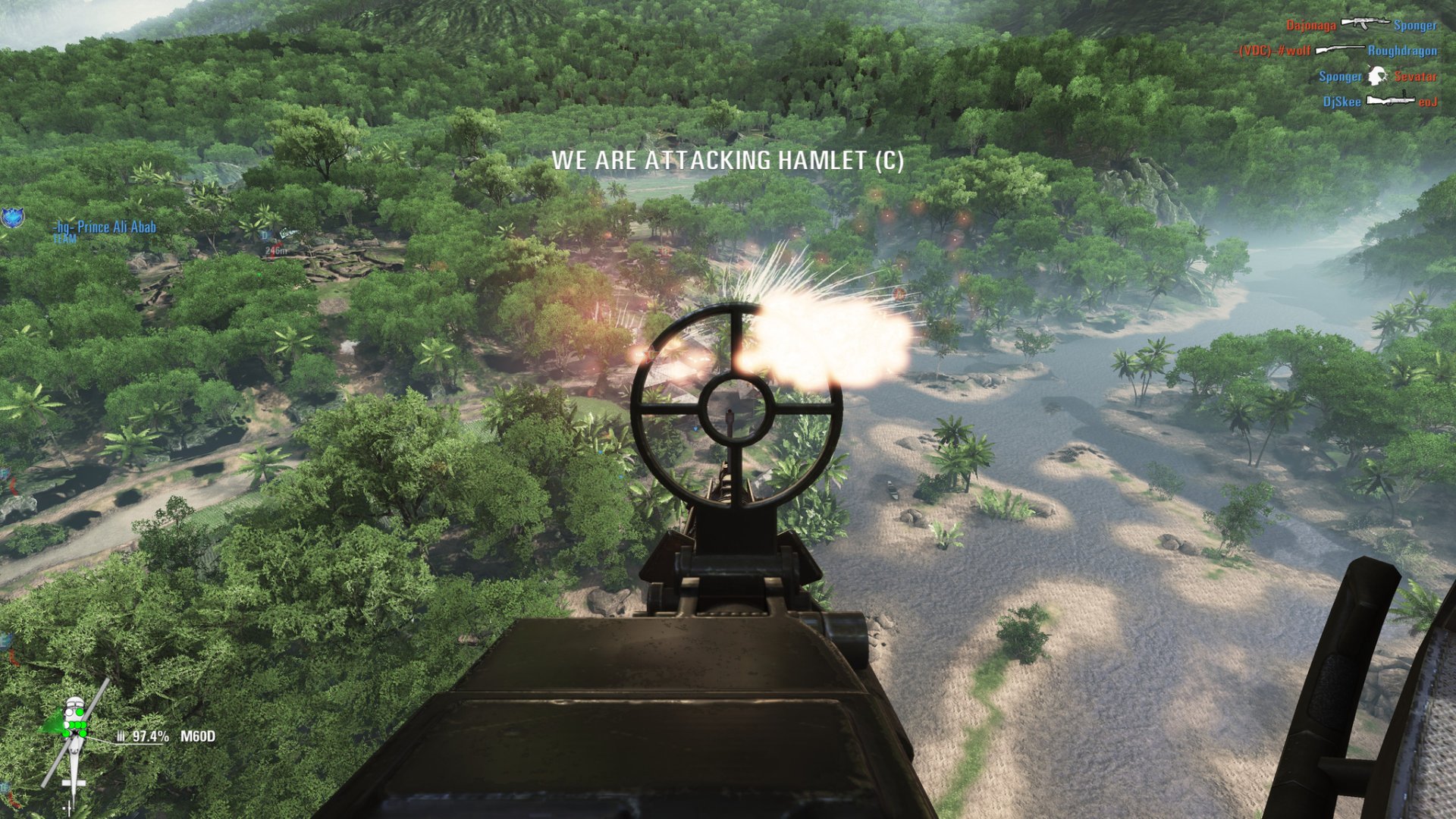
As with the original Rising Storm, the most notable thing about the sequel is how the developers designed a game that seeks to accurately convey a conflict where the two sides had major differences in technology and tactics while also maintaining balanced gameplay. During the conflict, the North Vietnamese and Vietcong had access to a smaller, outdated arsenal of weapons, and instead relied on their knowledge of the jungle terrain and guerrilla tactics such as traps and ambushes to deal with their better-equipped opponents. The United States brought cutting-edge weaponry in the form of transport and attack helicopters, and planes capable of dropping foliage-burning Napalm and other high octane ordinance on their opponents.
To mirror this conflict, Antimatter have made the two sides play quite differently. The US Forces have undeniably superior firepower, with access to a variety of helicopters, deadly call-ins and lethal weaponry. The helicopters come in a few varieties, with the transport Huey being perhaps the most important; these act as mobile spawn-points, and can drop off US Soldiers behind enemy lines. The Cobra only takes two people, but can fire machine guns and rockets at enemies on the ground, while the Little Bird is the smallest helicopter but still comes equipped with mini-guns, useful for harassing enemy troops. The helicopters have a realistic handling model so flying them effectively is no easy feat, and it also means there are less men on the ground for the US, though thankfully there is a mode that lets you practice.
The fire-support available to the United States is also something to be feared. In addition to normal artillery strikes, the US can call in Napalm strikes or the AC-47 ‘Spooky,’ a plane which flies high in the sky and reigns down devastating high-caliber machinegun fire over an area of the map. The US also have access to the most modern weaponry available at the time, with the M-16 having low recoil and deadly accuracy compared to their opponent’s assault rifles, and some unique weapons like the flamethrower and M-79 grenade launcher giving the US a distinct advantage in clearing out small rooms or buildings.
Being on the receiving end of all this firepower can be terrifying, but the Vietnamese forces have some important tricks up their sleeves to balance things out. Their biggest advantage is the ability for squad leaders to build squad tunnels. While the US are only able to spawn on squad leaders, which means they must stay alive, the Vietnamese can spawn on squad tunnels which can be built right behind the front lines, allowing players to get back into the action much quicker, and also for Squad Leaders to fight less cautiously. Other tunnels that are part of the map can be entered by troops on either side, but only the Vietnamese can use their primary weapons in these tunnels, and many US classes do not have side-arms.
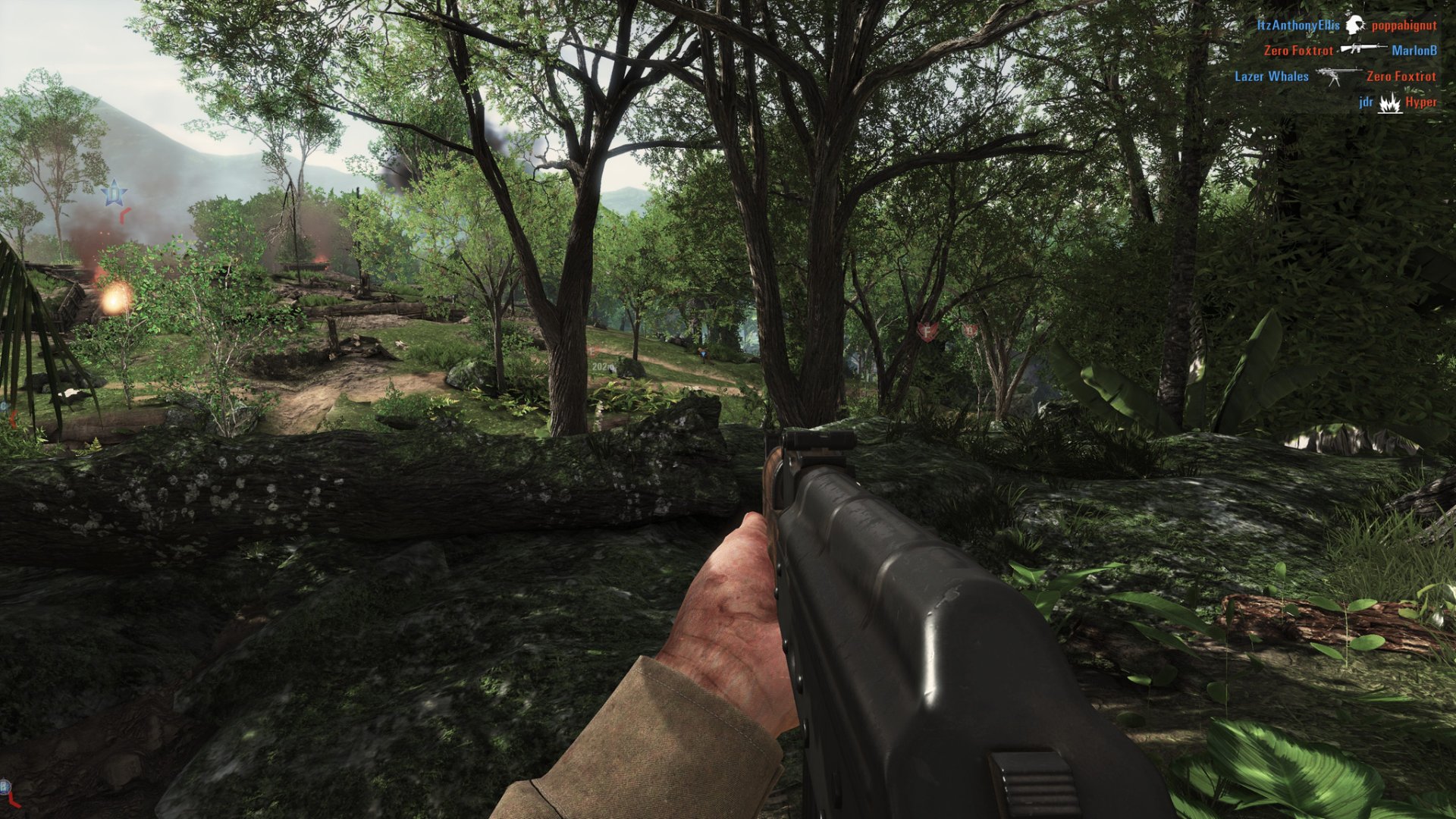
The Vietnamese can also place a variety of traps, with even basic grunts being able to place down ‘punji’ spike traps and tripwire mines, while the Sapper class can put down even deadlier and harder to see toe popper mines. To deal with helicopters, many maps have heavy machine-gun emplacements that can be pointed skywards to bring down the birds, and one class has access to a RPG that if aimed carefully can be used to bring down helicopters or to clear out buildings of enemy forces. Vietnamese forces can also hide from recon planes by crouching and staying still which can be very useful for maintaining the element of surprise.
So once again, Antimatter games have done a great job of creating asymmetrical factions that appear at least so far to be reasonably well balanced. As with previous games in the Red Orchestra and Rising Storm series, most of the classes have very limited slots available. Usually about half the team will be stuck with the basic grunt class, though at least these roles now have access to an array of fully and semi-automatic weapons rather than the bolt-action rifles of Red Orchestra and Rising Storm 1. If you are someone who only ever wants to play as a certain class however, this may be an issue for you.
Unlike the first Rising Storm, much of the command structure is no longer tied to any specific class. Though the all-important commander role is still a class, squad leaders can now choose to be any class, and smaller squads mean there are more opportunities to play as an officer. Squad leaders are responsible for forward spawns for their squad, putting down markers for fire support, and taking orders from the commander. The commander in turn is responsible for choosing which support markers to use, and which type of support will be best suited to a given situation. A good commander on a mic can bring a team together, but a commander who doesn’t know what he is doing can be a disaster, calling down artillery on friendly troops and stifling coordination. With the influx of new players surrounding the game’s launch, finding servers with good teamwork can be a challenge, but this will likely improve with time as the community matures.
The feel of gameplay will be instantly familiar to anyone who played previous games in the series. Apart from the helicopters, Rising Storm 2 plays just like its predecessor, only with a larger number of fully-automatic weapons. With the short time to kill, this results in much deadlier close range encounters on average as it only take a few bullets to kill someone. The high recoil of most fully automatic weapons prevent bullet-hosing at long range, but most of these weapons have a semi-fire mode that can make them lethal over longer distances as well. Occasionally if you get shot in a non-lethal location, you will have the opportunity to take cover and bandage, but typically you will be killed instantly, and much of the time you will have no idea where from.
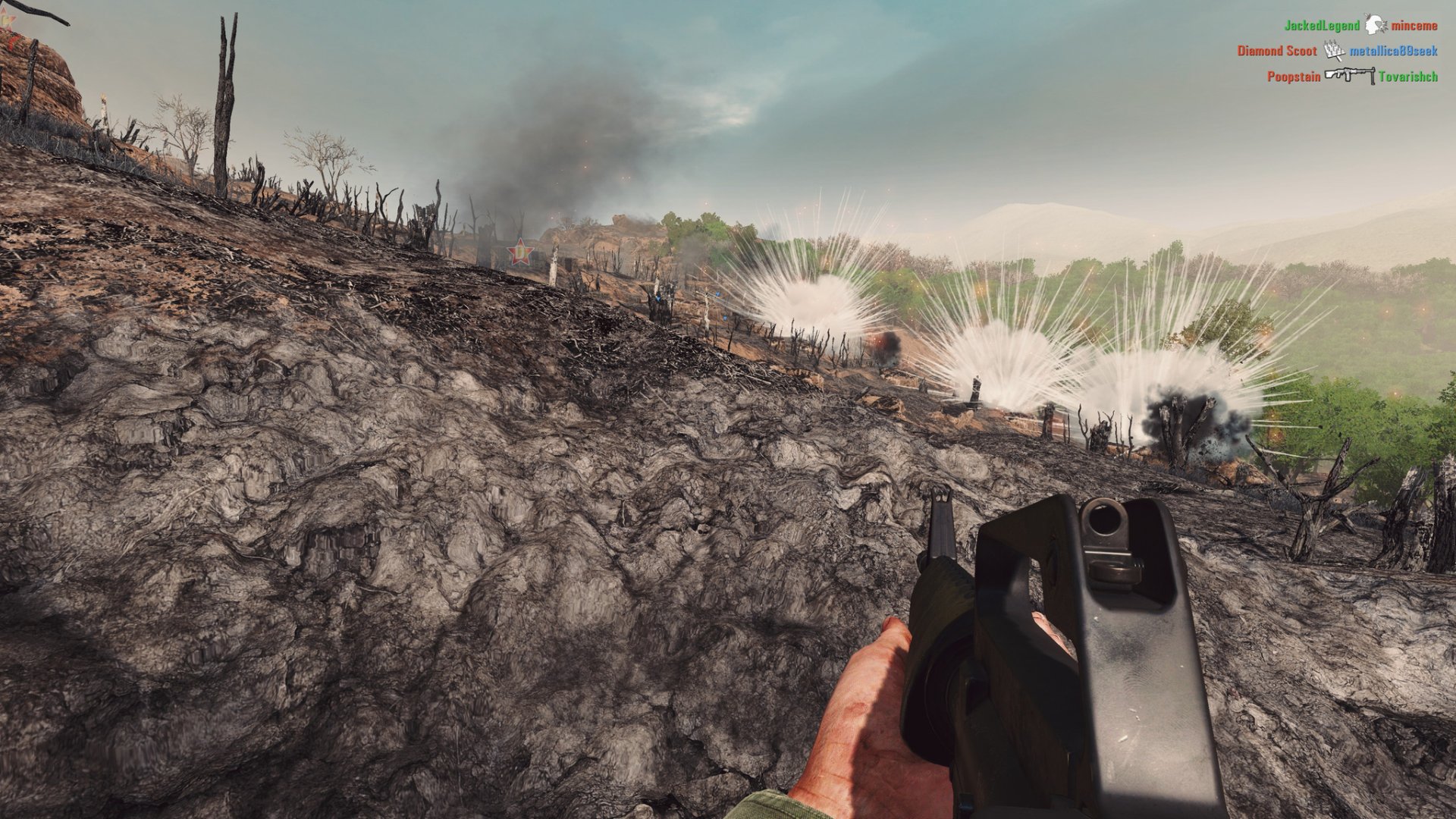
This lethal gameplay means that early experiences might be unpleasant, especially for newcomers to the series. In addition to the realistic damage model, friendly fire is always on, and the UI gives minimum information to help you discern friend from foe. If you aim at a friendly player, you will see small blue triangle to indicate they are on your team, but often the time it takes to make this distinction for new players will put them at a distinct disadvantage when a split second can make the difference between life and death.
With time, you will learn to differentiate the uniforms, weapon sounds, voice acting and animations of the two sides and distinguish friend from foe easily. This is made somewhat more challenging by character customization elements that are unlocked as you level up, though all cosmetic options are limited to historically founded attire. For non-series veterans the early going can be rough indeed, and apart from a basic firing range, helicopter practice range and some video tutorials there are minimal opportunities for newcomers to familiarize themselves with the mechanics before going online.
If you persevere and manage to overcome the initial learning curve however, Rising Storm 2 lives up to its predecessors as being one of the most compelling and intense online shooters around. The simple act of staying alive can be a thrill, as you dash across open spaces or creep through the jungle, listening for enemy gunfire as helicopters buzz overhead. The Territories game mode that has been a staple of the series returns, and remains a great but challenging mode as two 32-player teams attempt to attack or defend a series of objectives.
There are also two new modes, Supremacy and Skirmish. Supremacy is a 64 player engagement, and is a great twist on a Conquest type mode. This mode sees both teams fighting over a number of objectives on a large map, but they must capture objectives in adjacent territories in order to benefit from it. To win, you must hold more objectives that are connected to your base than the enemy for an extended period of time in a sort of tug-of-war. This mode is a bit slower paced and less frantic than Territories as the action is spread out over a larger area, and forward spawn mechanics such as squad tunnels and helicopters are crucial to a team’s success. Skirmish on the other hand is a much smaller scale 16 player mode, a twist on Domination where your team can only respawn once an objective is captured. This is a fun diversion and there can be some tense moments where only a few players are alive on both teams, trying to capture objectives, but lacks the intensity and teamwork of the 64 player modes.
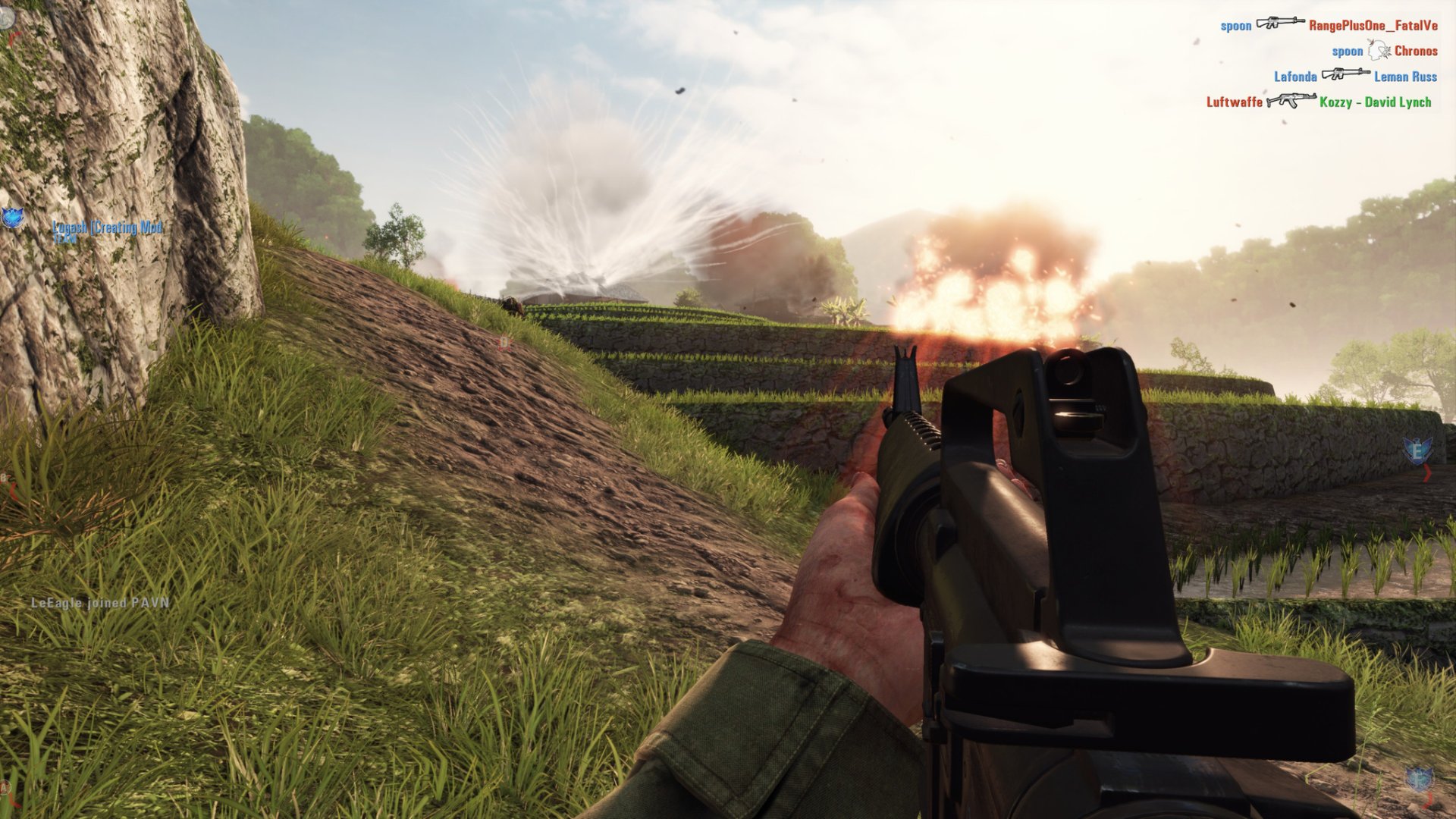
Perhaps the biggest drawback to Rising Storm 2 is the lack of maps. While there are 8 maps in total, a reasonable number for a budget priced shooter, they are divided up between the modes so that there are only three territories maps, two supremacy maps and three skirmish maps. There are no stinkers among them and a great variety of terrain, ranging from the jungles of Song Be to the completely urban Hue City to the wide open, bombed out Hill 937, but some maps are definitely better than others. If you only end up enjoying one mode, the lack of maps could end up being a serious issue.
Another unfortunate aspect is the return of some rough edges from previous games in the series. Mantling over walls or even smaller logs and ledges is a bit clumsy at best and downright broken at worst, and you will occasionally die because you weren’t able to get the mantle prompt or got stuck mantling while taking fire. It is easy to get caught up when moving while prone, and I managed to get stuck between trees a couple of times on the jungle maps. Sometimes even if your weapon appears to be resting on top of the ground or a ledge, you might find yourself shooting into it. There are times when the hit detection seems dubious, though it is difficult to tell if this is a result of the realistic gunplay mechanics or a technical fault. All of these issues will sound familiar to anyone who played previous games in the series and are minor by themselves, but it is a real shame they haven’t been addressed.
The return of these issues is likely a byproduct of the fact that the same engine that powered Red Orchestra 2 and Rising Storm 1 is being used again here, though it has been improved significantly. The game looks surprisingly good given the age of the underlying engine, with excellent map detail and special effects from fire support call-ins. The only drawback is a lack of good anti-aliasing which is especially noticeable on the jungle maps, though using a high resolution screen or third party tool to down-sample from a higher resolution can mitigate this and is possible, as the game runs quite well as a byproduct of the older engine powering it.
The audio is generally outstanding with mostly great weapon sounds and absolutely terrifying artillery that will make you want to cower inside a building until it stops. Environmental sounds on the jungle maps are great, and these in conjunction with helicopters buzzing overhead add to the atmosphere in a big way. There is an audio bug with one of the call-ins that makes it difficult to determine if it is effecting your area, though apparently this is a known issue. Background music is present on both teams with calmer orchestral soundtracks for the Vietnamese and Hendrix-style instrumental rock and roll for the Americans, though the sounds of conflict are generally so overwhelming that you might not even notice it’s there.
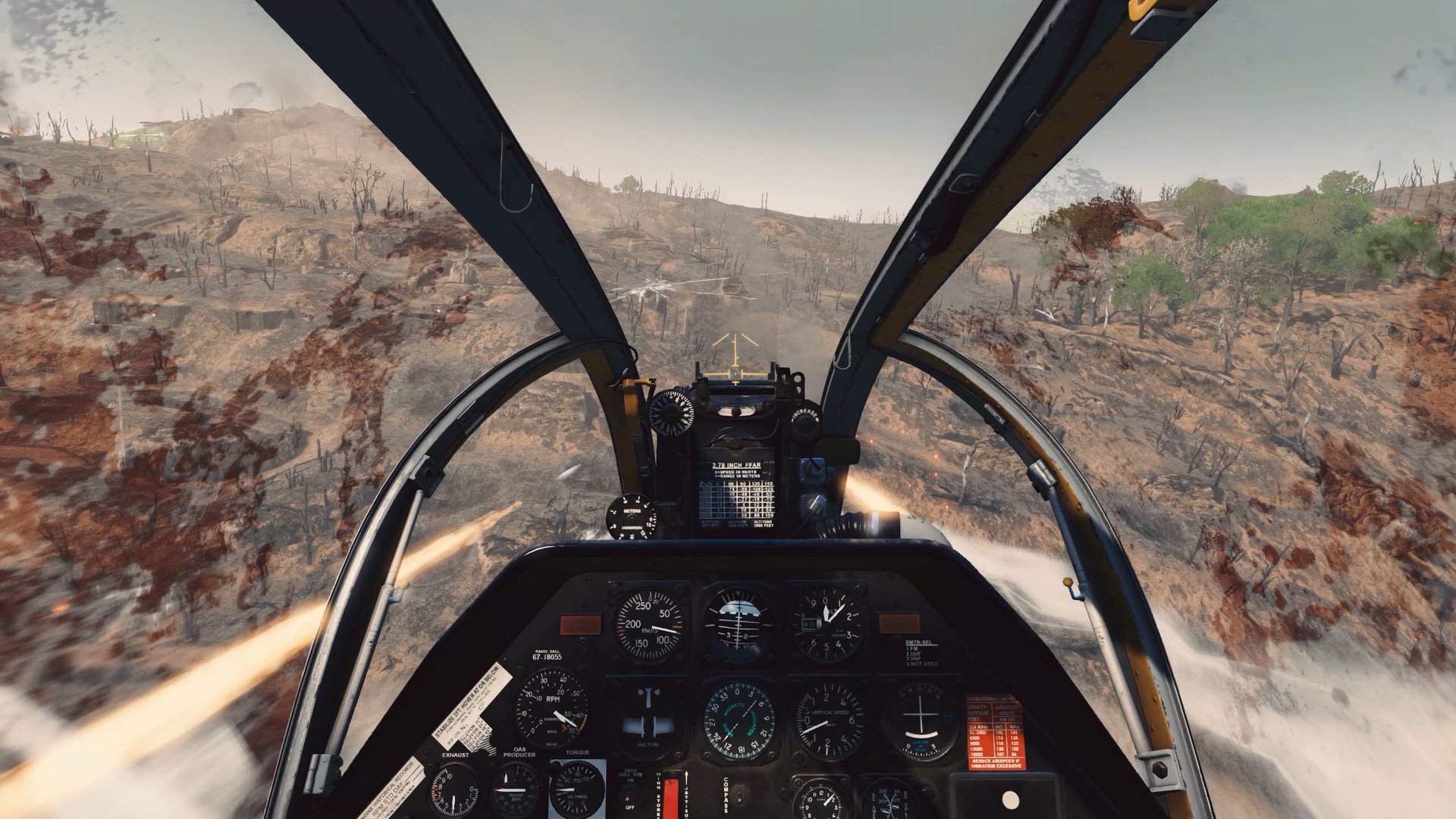
Even though Rising Storm 2 has a few lingering legacy issues from previous games and could use a few more maps, it is already a lot of fun and these are issues that will likely be addressed with free updates given the developer’s track record. If you enjoy Tripwire and Antimatter’s brand of hardcore historically themed shooters, Rising Storm 2 should be a no brainer as it offers up another helping of intense and atmospheric action in a setting that hasn’t seen this kind of realism-driven treatment since 2003’s Vietcong.
 Comments
Comments















